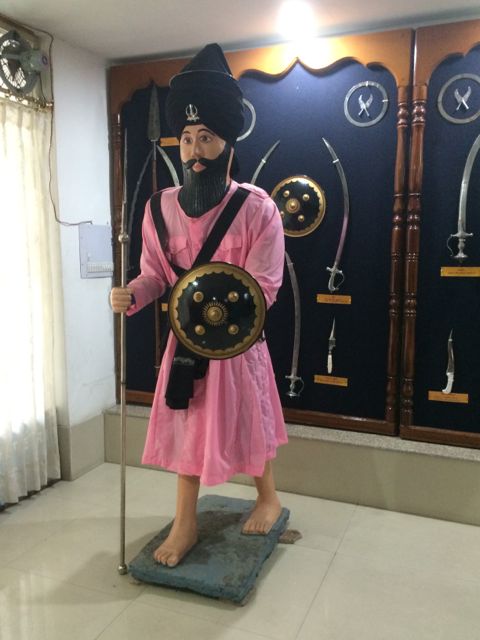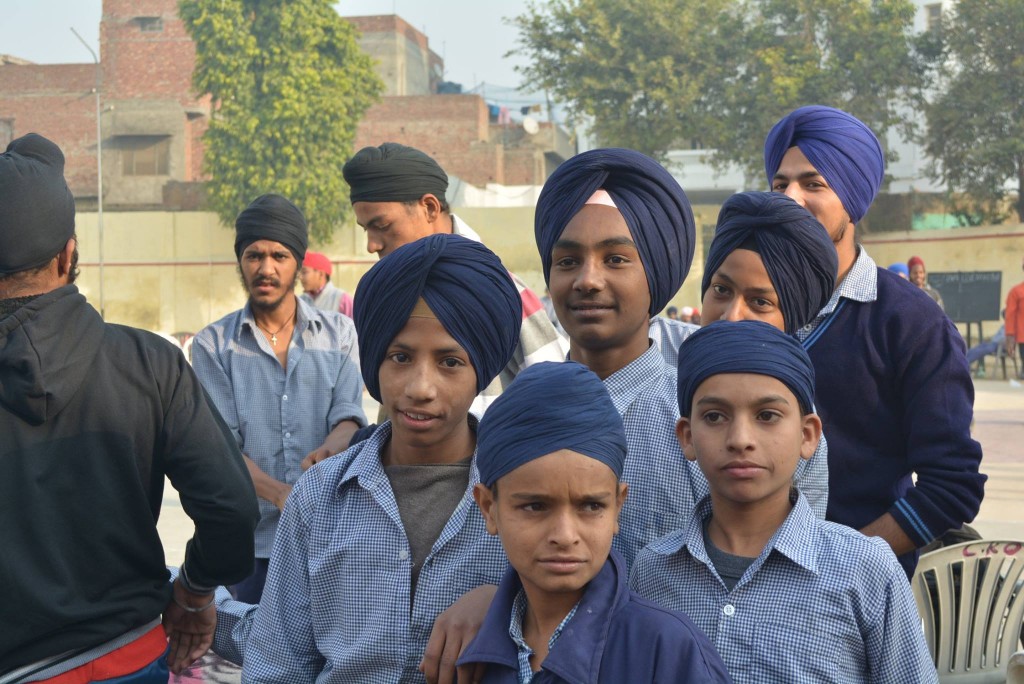When most people think of India, they think of temples, spices, and a land rich in color and religion. One of the five main religions in India is Sikhism. Sikhism developed in the fifteenth century and is native to the Punjab region of northern India. The term ‘Sikh’ itself originated from Sanskrit words meaning disciple, student, and instruction; which are some of each members most prided devotions. The main beliefs of this religion are depicted by the following the ‘Five K’s’ which consists of ‘Kesh’ (unkempt long hair), ‘Kangha’ (a small wooden comb), Kara (a steel or iron bracelet), ‘Kacherra’ (undergarment), and a ‘Kirpan’ (short dagger). For the followers of the Sikh religion, all of the aforementioned things must be kept on or close to the person at all times.
I learned about one of the five K’s, the turban, from a local host while on our tour of northern India with Go Eat Give. The size of the turban, which can be seen in all different colors and fashions, is directly related to the age of its wearer. For example, if an elderly man is wearing a turban, it will be quite large. A Sikh man adds another yard of fabric to his turban for every year of his age. This is why when you see a small boy who follows this religion, his turban may look more like a hair wrap with a small knot on the top. The reason the turban is worn is to contain their hair, which is never cut. 
The Sikh person who was our host in Chandigarh explained that to twist the long pieces of fabric into a perfectly created turban, the hair is braided from the neck up above the head, and then carefully tucked under a separate hair net, which goes under the turban. This hair net ensures that the hair will not slip out of place while also adding sturdiness to the headpiece. After this, the long pieces of fabric are carefully wrapped around the head in a layered, circular fashion to ensure support and neatness. This is done every day in the morning at least, sometimes multiple times a day. The process takes on average about forty minutes each time.
As for the meaning behind the colors of the turban, most people choose a designated color to match their clothing or to fit the current fashion. However, there is a special meaning behind the bright orange head wraps that seem to be most popular. Orange color is representative of the spice saffron, which is one of the country’s most common spices and has a long connection in the past to the Sikh religion and its following. It is also the official Sikh color to represent wisdom and clarity of the mind.
Taking into consideration how much time Sikh followers spend each day maintaining and wrapping their turbans and head wraps, it is very clear that they are a very devoted and dedicated people that pride themselves on daily commitment and hard work in order to demonstrate their faithfulness and love of their religious beliefs.

